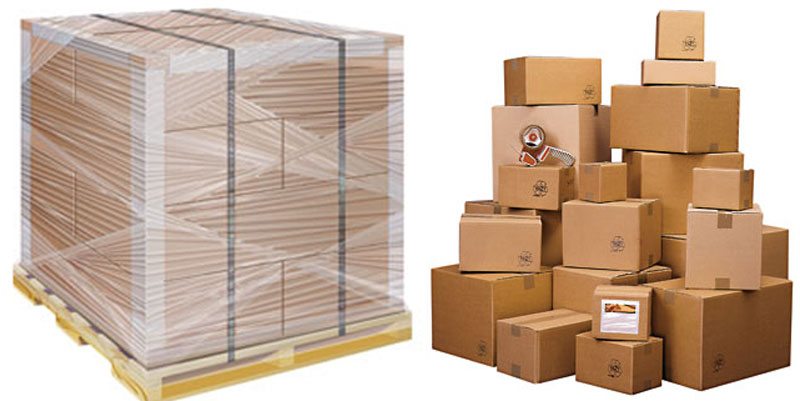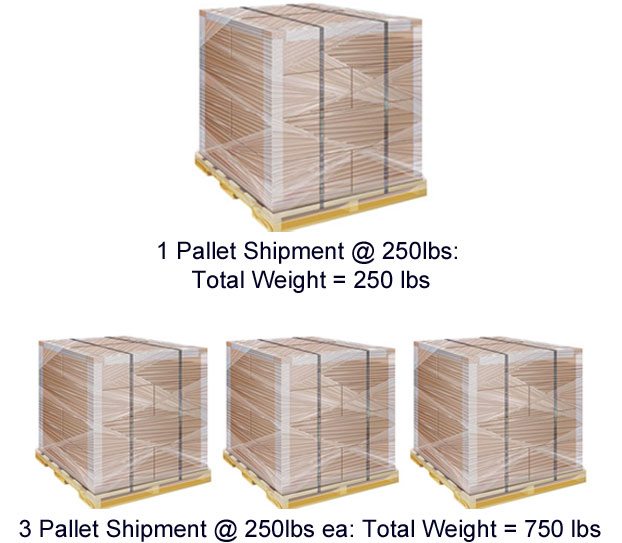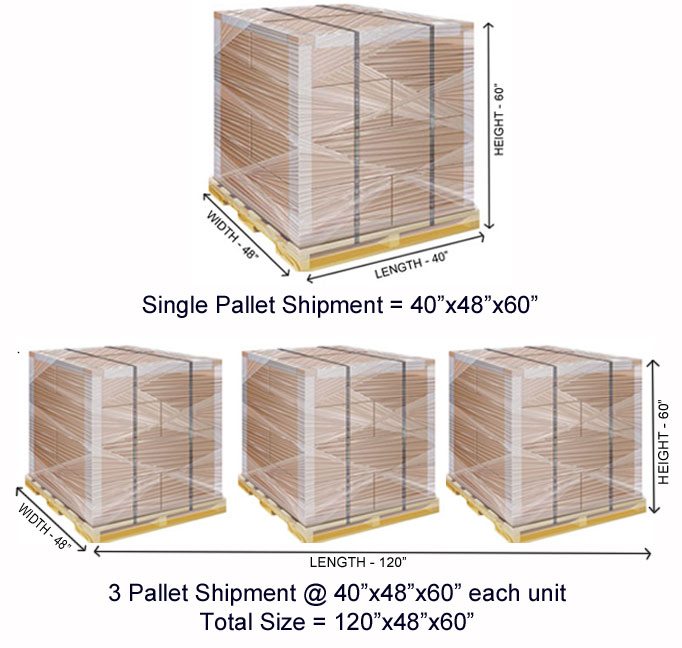What is LTL Freight?
If you’ve received a pallet, large box, or crate delivered by truck, then you’ve received LTL freight. The term LTL freight simply means less-than-load or less-than-truckload, and is used to define freight shipments that don’t fill up an entire truck.
LTL shipments often use wrapped pallets (left), wood crates (center), or corrugated containers (right):

Most carriers consider a shipment between 1 and 6 units an LTL freight shipment. A larger shipment of 7 to14 units is generally considered a partial- to full-truckload shipment and is priced at different rates than LTL freight.
When Should You Use LTL Freight?
Once a parcel shipment reaches a certain number of boxes and total weight (the weight of all boxes added together), LTL freight can be far cheaper than shipping parcels individually. For my ecommerce company, the LTL savings tipping point was typically a 250-lb shipment. Depending on what you ship, your tipping point may be higher or lower.
Another plus to shipping LTL freight: the entire order is packed into one unit that’s typically moved via forklift while enroute to your customer. This can help reduce breakage compared to shipping several smaller boxes that get tossed around by shipping employees along the way.

How LTL Freight is Priced
LTL freight rates are based on these five main factors:
-
Total Weight of your shipment
-
Total Size of your shipment
-
The Distance it’s travelling
-
The Service Type or delivery speed
-
The Freight Class, based on the goods being shipped and/or shipment size
Now let’s look at each factor in detail:
1. The Total Weight of Your LTL Freight Shipment
This is the weight of your shipment, all packed and ready to go. For a single-piece shipment, you just need the final weight of the packed unit, be it a pallet, crate, or other container. For multi-piece shipments, just add the weights of all units together, like this:

2. The Total Size of Your LTL Freight Shipment
This is the total space, length x width x height, that your shipment will fill in a truck. For single-piece shipments, just measure length, width, and height of the packed freight. For multi-piece shipments, measure the width, height, then add the lengths together to get the total size of the shipment, like this:

Luckily, ATC will do this math for you when you get a quote. But remember, it’s important to be accurate when measuring the total weight and size of your LTL freight shipment. If wrong, you could wind up paying more than your quoted rate.
3. The Distance Your LTL Freight Shipment is Travelling
This is pretty self-explanatory, but there is one interesting fact you should know. Freight travels via commercial routes called shipping lanes. Depending where you’re shipping from and to, lanes to closer destinations can be more expensive than lanes to farther destinations. So if you’re in Houston, don’t be surprised if the same shipment costs less to ship to New York City (1,628 mi) than to Los Angeles (1,546.0 mi).
4. The LTL Freight Service Type You Choose
Delivery speed is another factor that affects your LTL freight costs. Carriers have different names for these service types, but they typically fall under three timeframes:
Standard Freight
This is the ground transit time for LTL freight. When you get a freight quote, be aware that standard shipping times aren’t guaranteed. Plus you’ll see they vary as much as 2 to 3 days among carriers.
Expedited/Express Freight
Faster delivery service is available for an additional cost with most LTL freight carriers.
Guaranteed Freight
Guaranteed freight adds another cost to your LTL shipment, but is the only way to be certain freight will arrive on a specific day. You can even schedule a delivery appointment.
5. The Freight Class of Your LTL Freight Shipment
This is where shipping LTL freight gets a bit complicated. Freight class requires some explanation to truly understand, but here’s what you really need to know:
- LTL freight classes are numbered from 50 to 500
- The lower the number, or class, the lower your LTL freight costs
- Freight class is determined by either the goods being shipped or by shipment weight and size (called density-based classing)